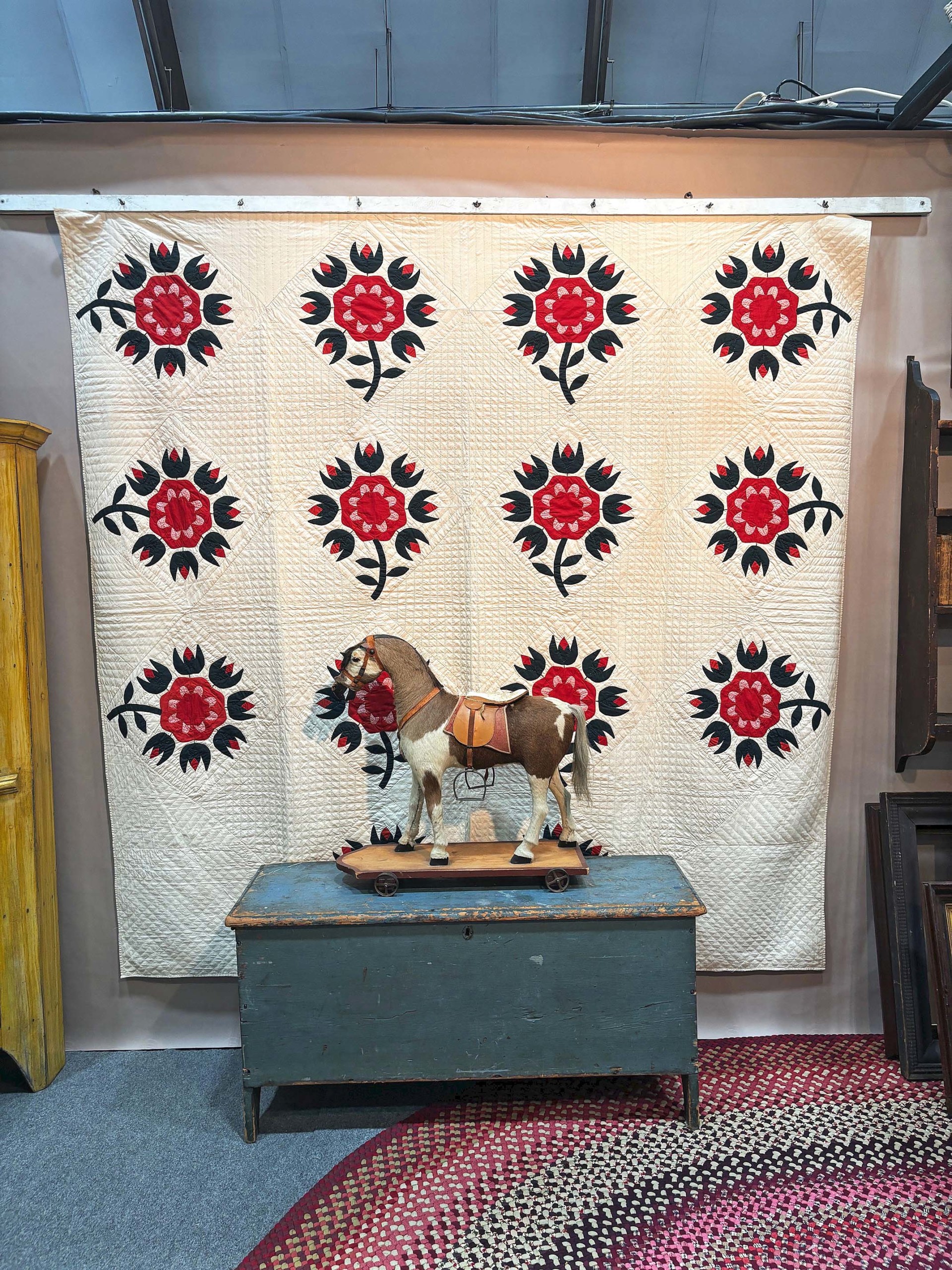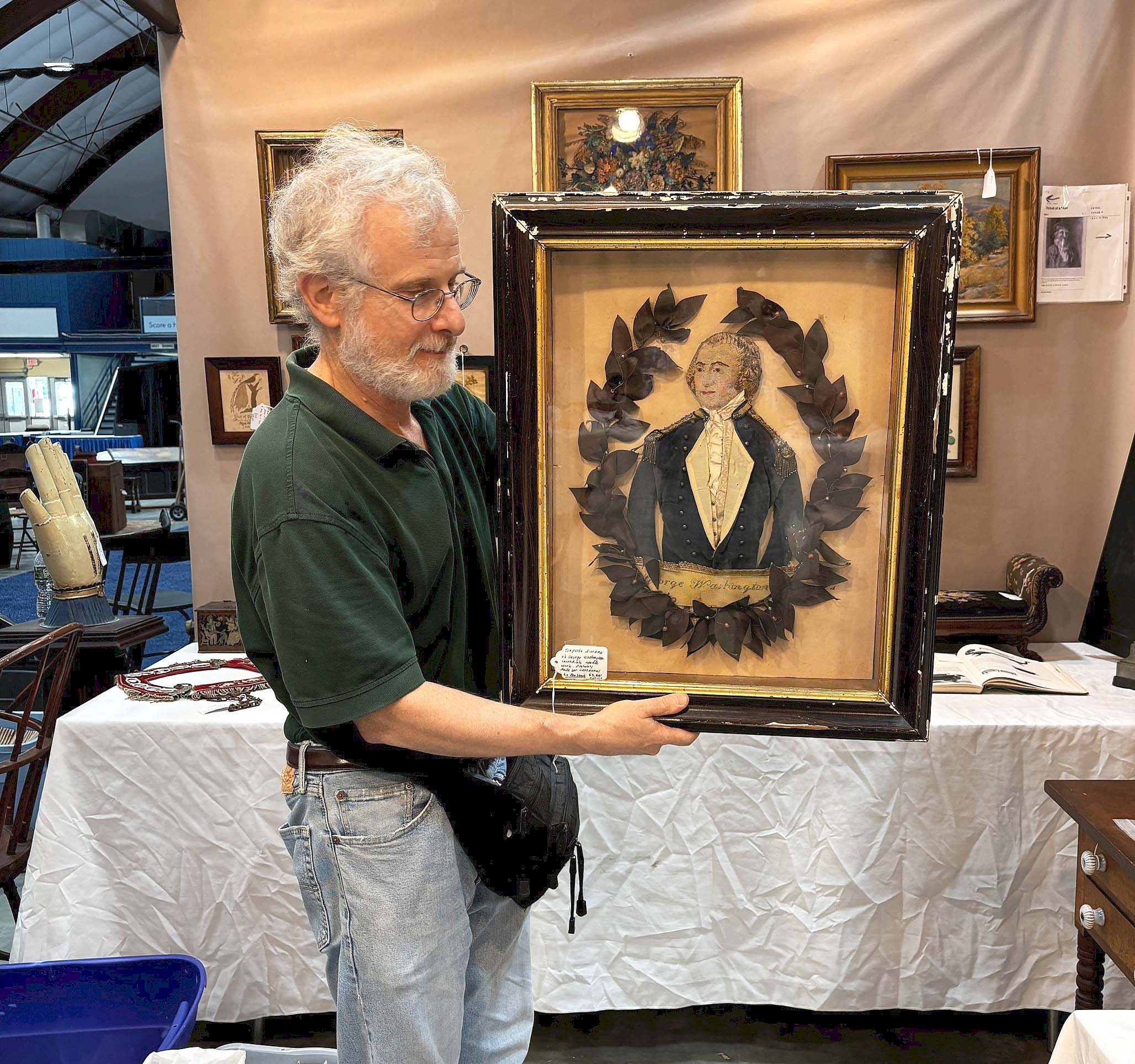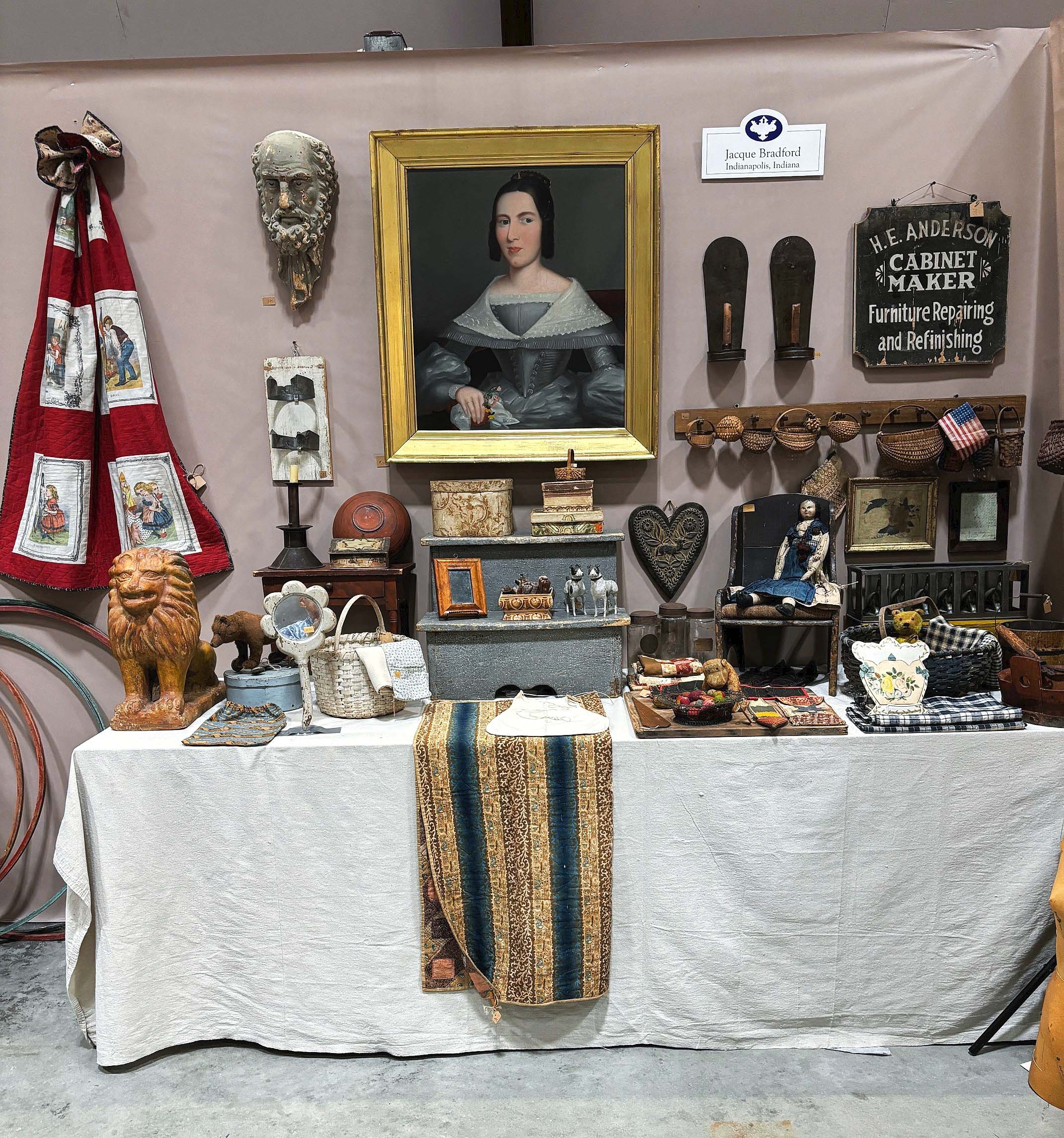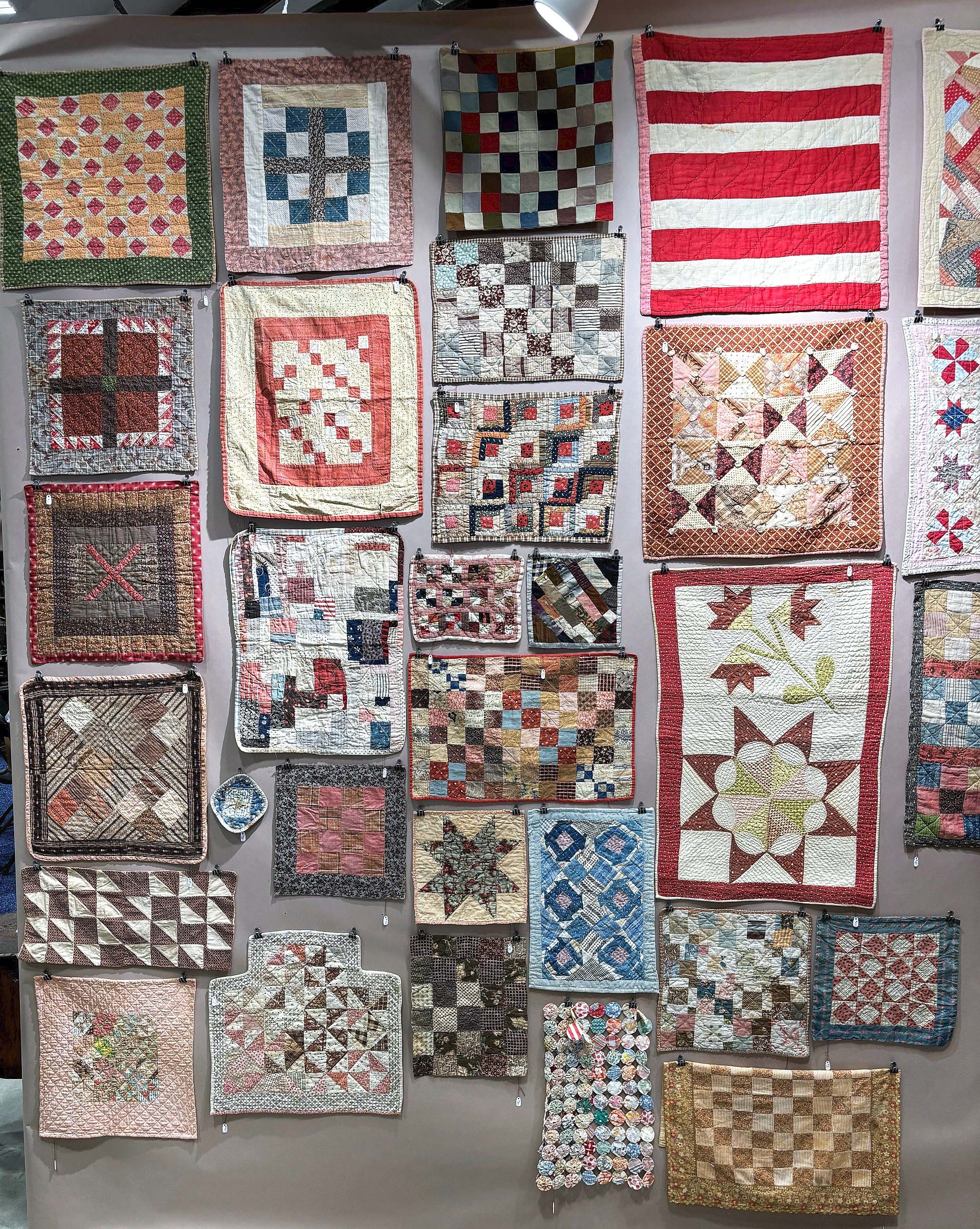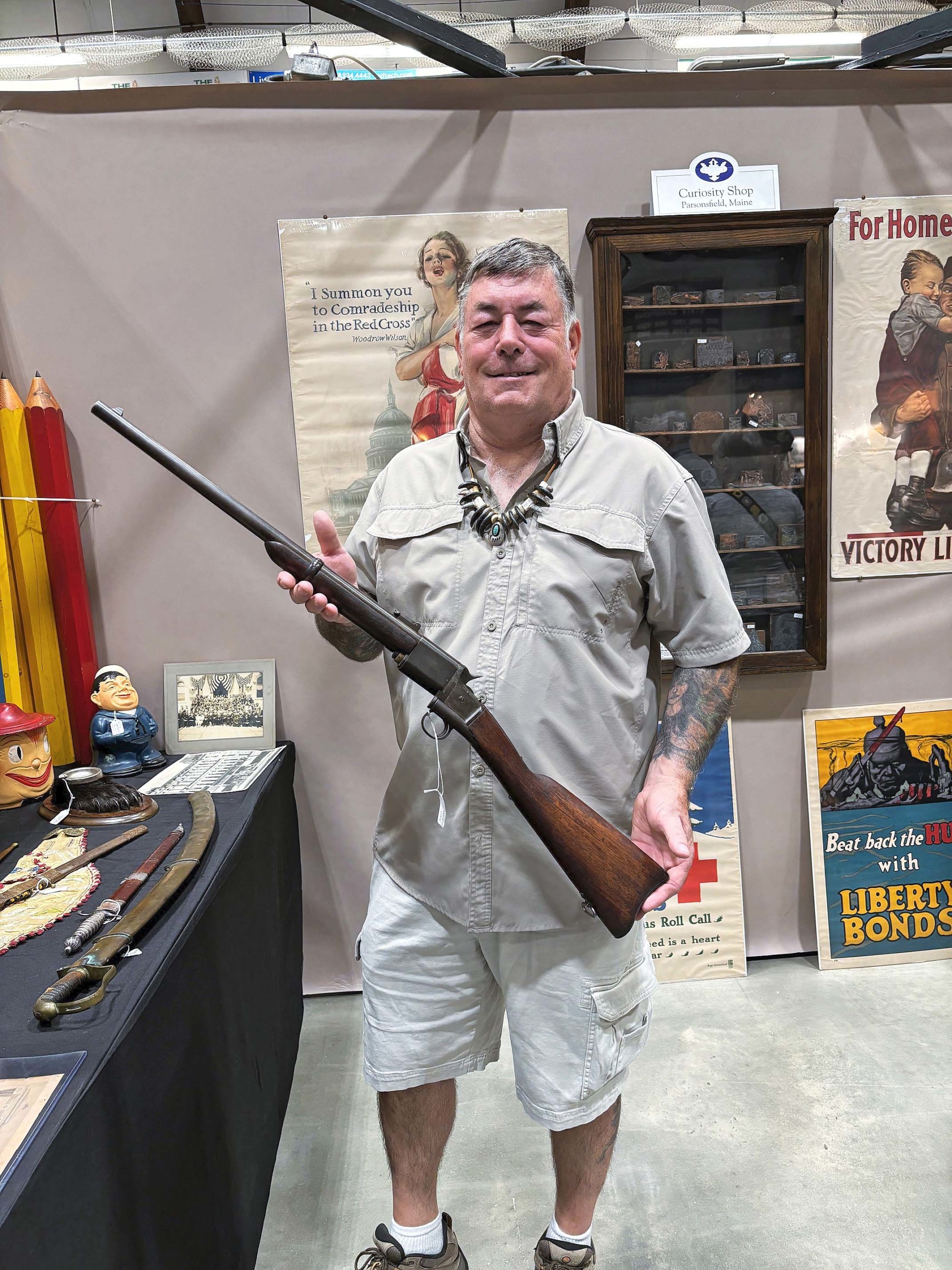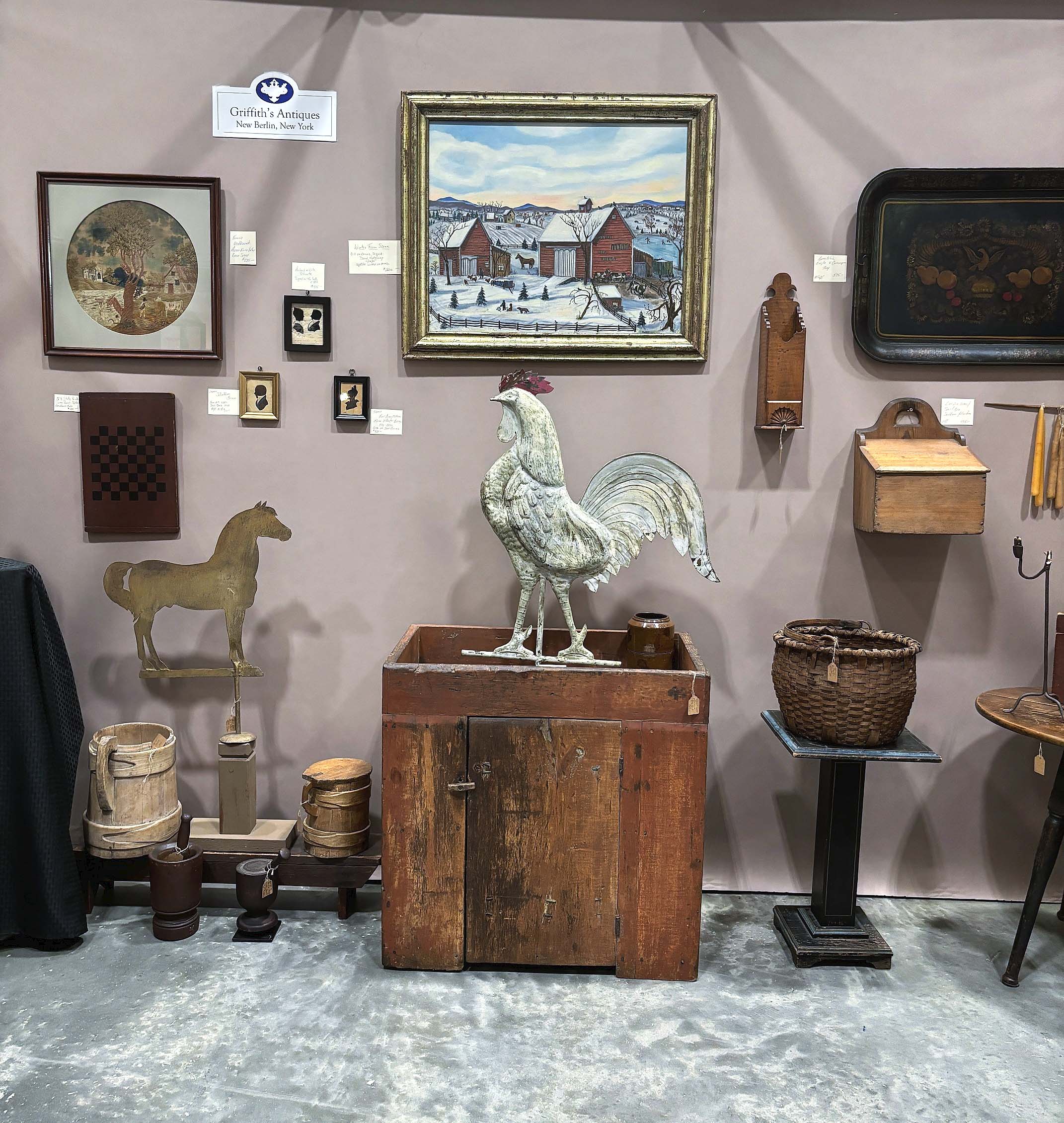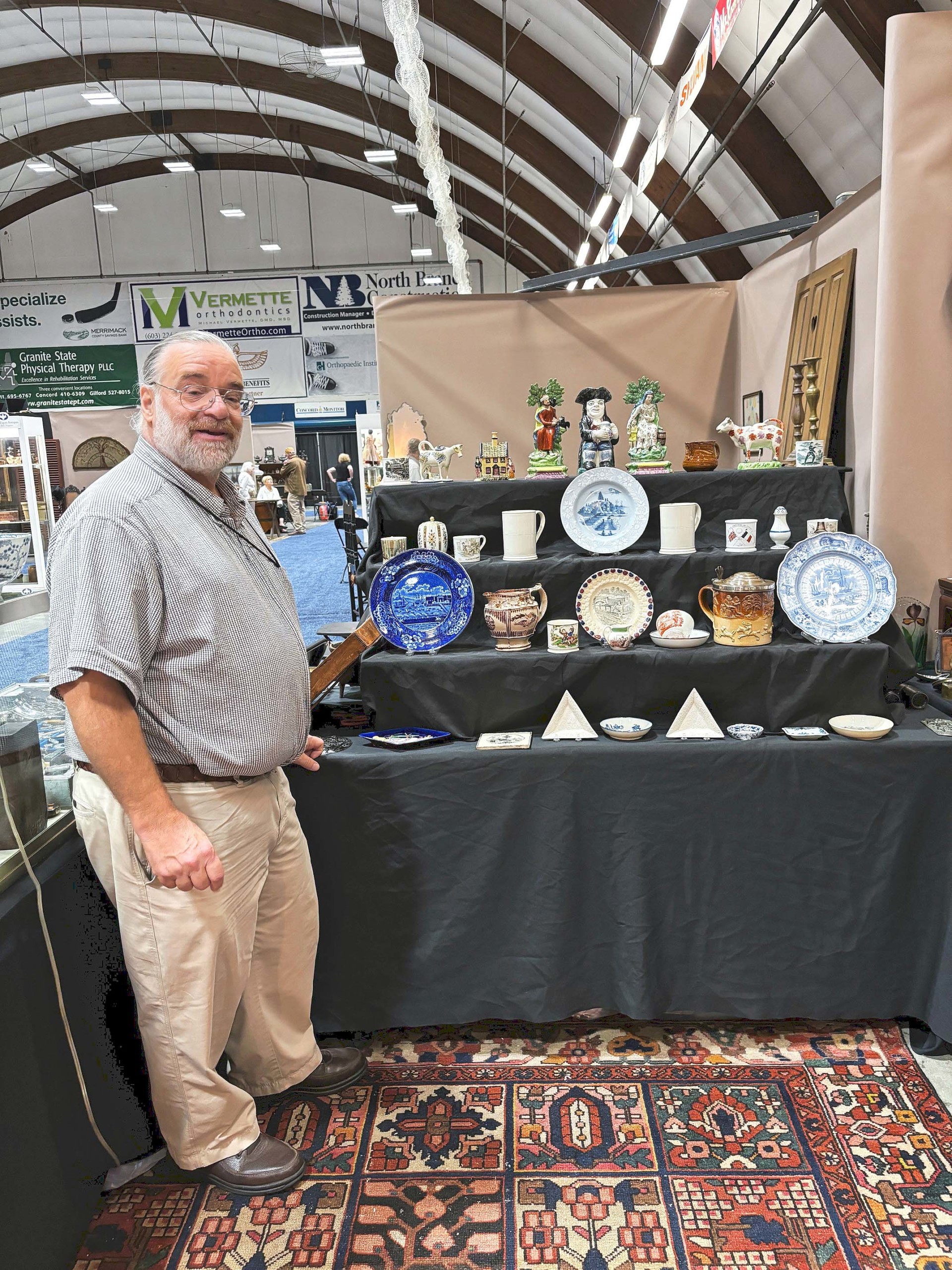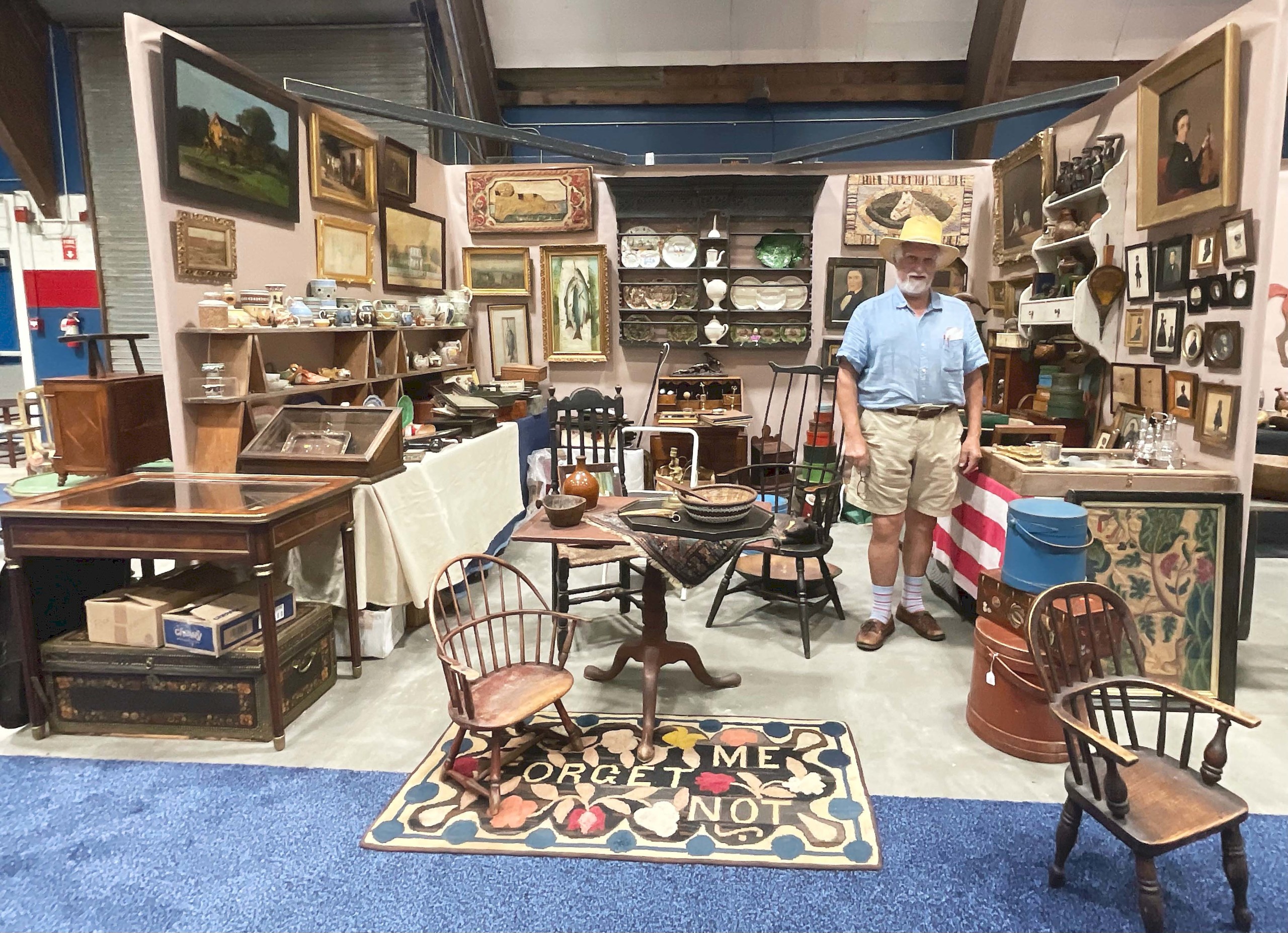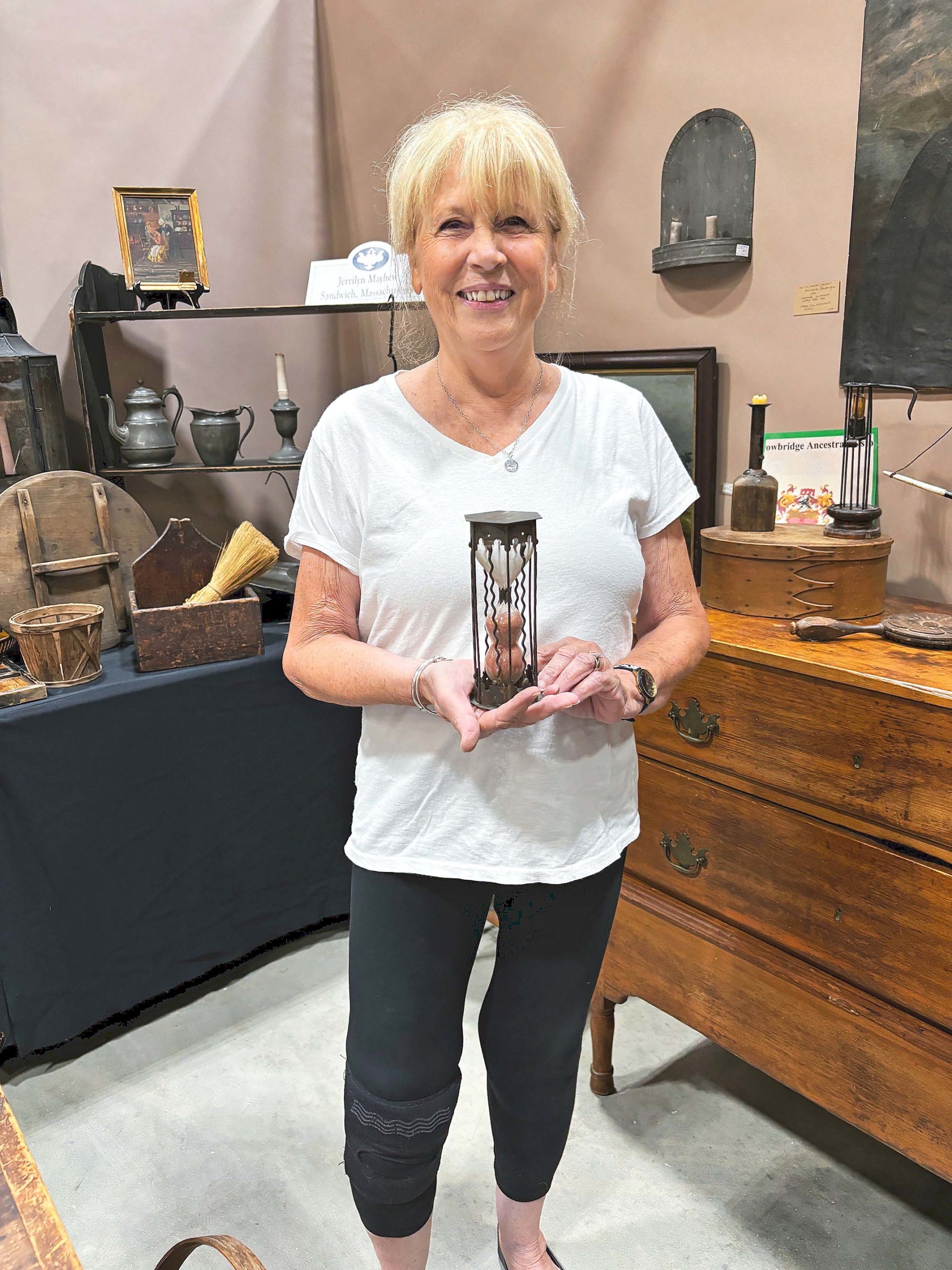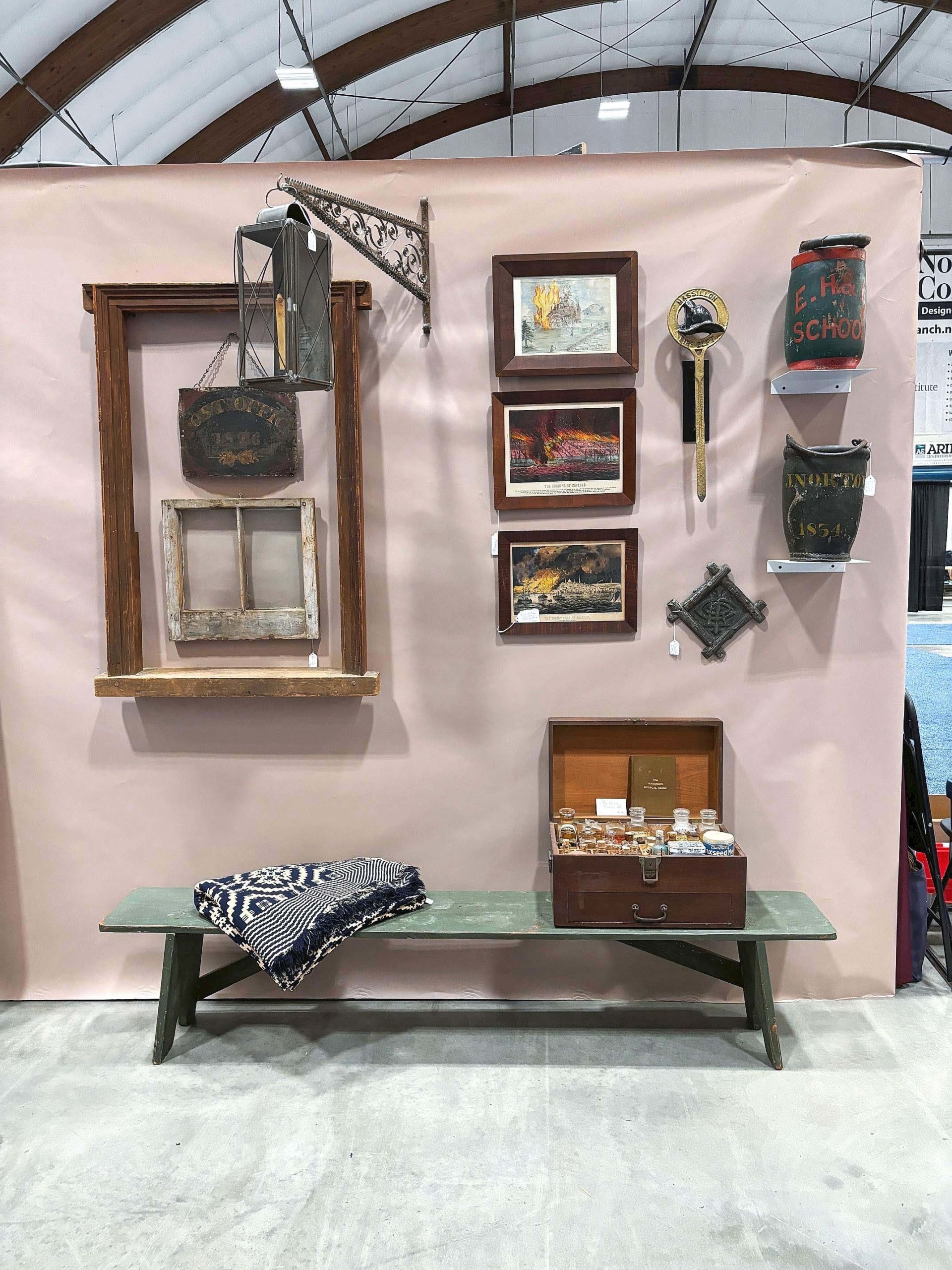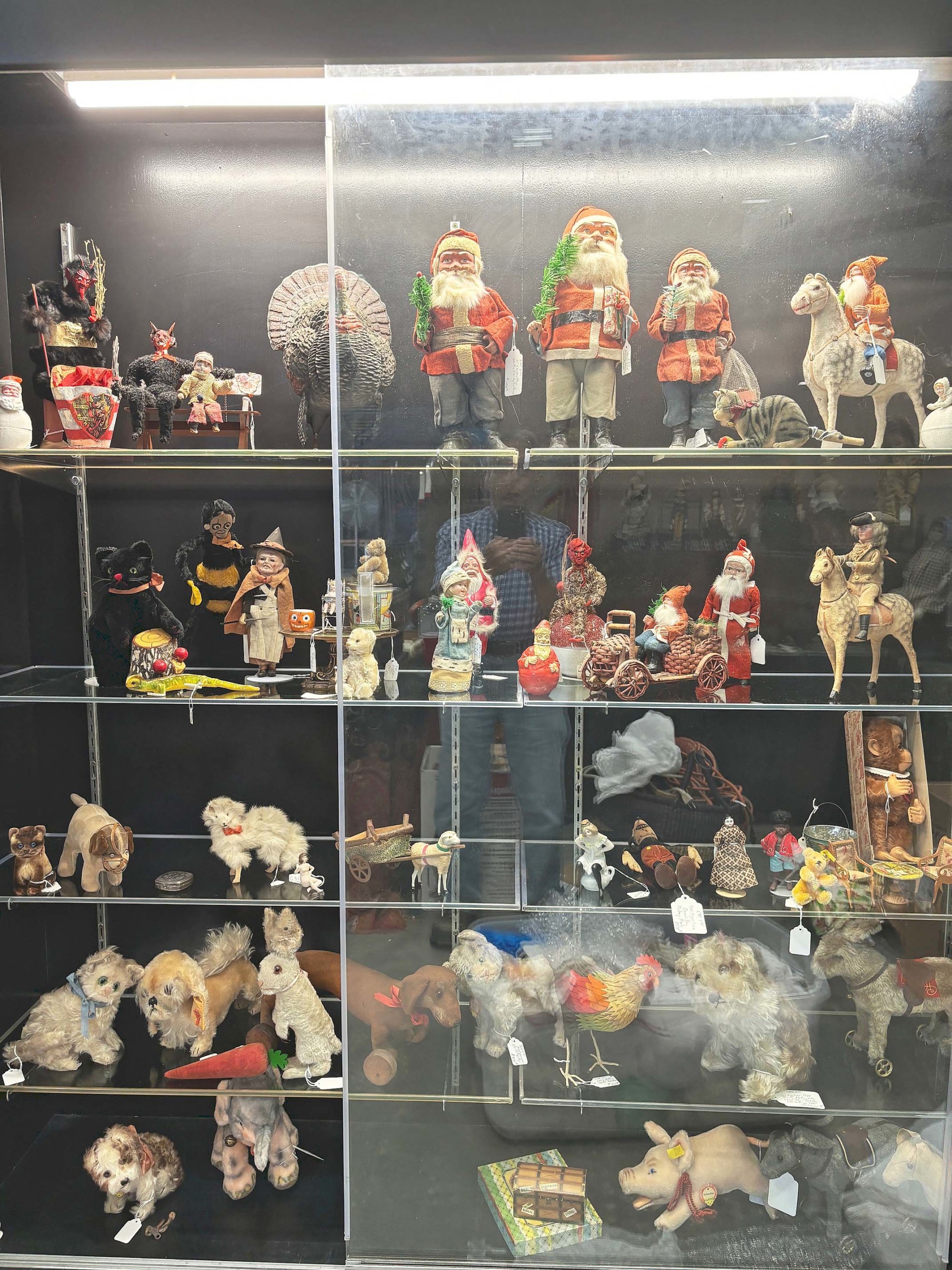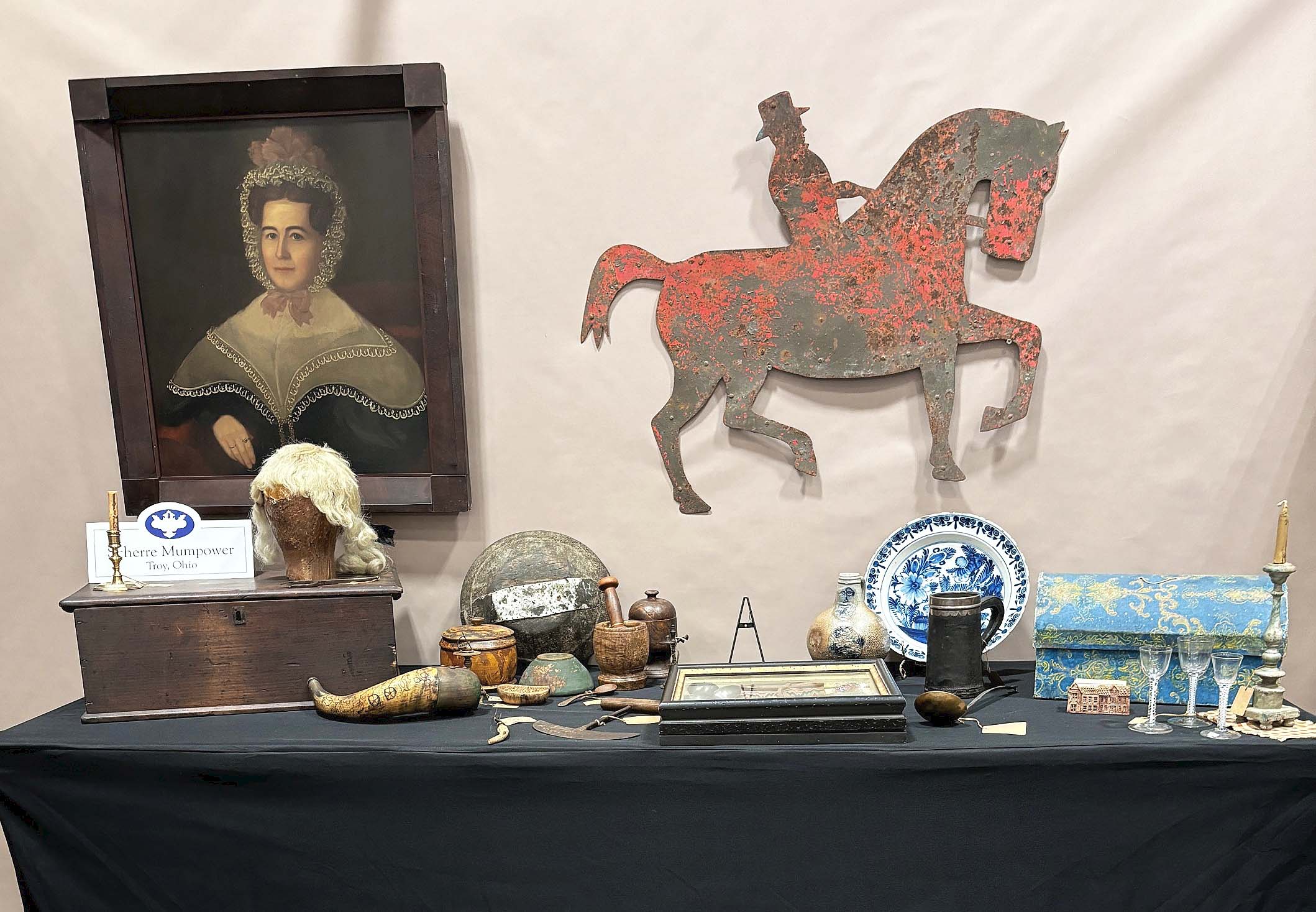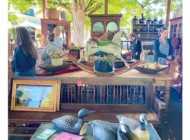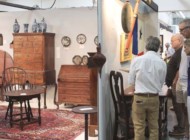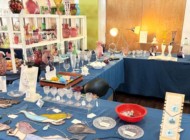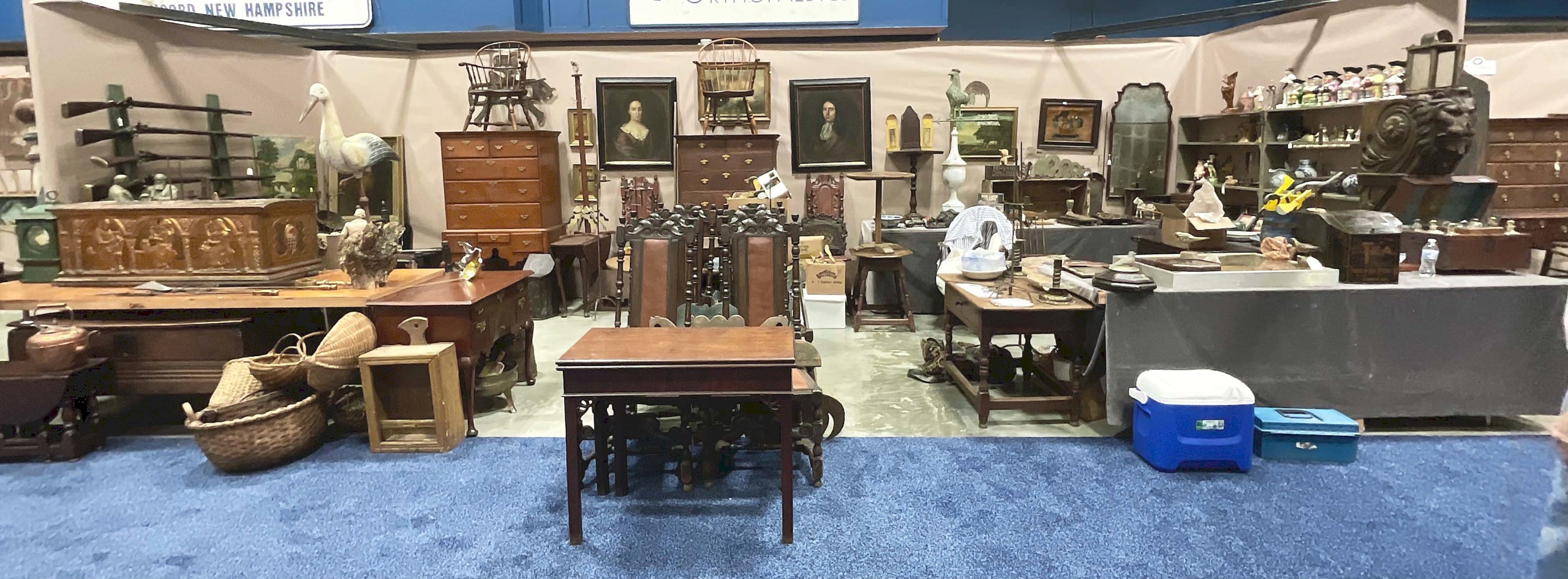
The circa 1550 coffer was at the front left of the Benting and Jarvis booth. The Barrington, N.H., dealers had a booth full of early furniture, Delft, ironware and more. Kathy Bovard photo.
Review & Onsite Photos by Rick Russack
CONCORD, N.H. — Peter Mavris’ Americana Celebration Antiques Show on Tuesday, August 6, was the third of the five shows that comprise Antiques Week in New Hampshire. It had 40 dealers and a very strong early buyer crowd. More than 300 paid the premium for the 8 am opening and it’s unlikely any were disappointed. Mavris, the show’s manager, also runs a series of monthly shows in the fall and winter in Hampton, N.H.; many of those dealers exhibited at this show, while there were several Midwestern dealers that may have been new to some Antiques Week shoppers.
Some of the earliest material offered at the five shows was available at this show. Ross Levett, Thomaston, Maine, had recently bought a very large collection of brass and iron from the estate of a serious long-time collector, which included candlesticks going back to the Sixth Century, with none made after the Nineteenth Century. One pair had been made in Indonesia in the Seventeenth Century, for the Dutch market. He had Sixteenth Century engraved tin candlesnuffers, a four-piece set of very heavy, iron-bound copper measures, early fireplace equipment and a horn snuff box, among other things. Levett said that this was the first time he had brought any of the material from the collection to a show.
Al Benting, Benting and Jarvis Antiques, Barrington, N.H., had one of the earliest pieces of furniture: a gold-painted coffer decorated with scenes of medieval craftsmen and more. He said it dated to about 1550 and, as the story goes, had been donated by a Welsh nobleman to England’s Exeter College, at Oxford, at a time when a new chapel was built. The college’s history goes back to the early Fourteenth Century. In addition, Benting filled his booth with other early furniture, early metalware, paintings, figural groups by John Rogers, a large two-part Queen Anne mirror and much more.
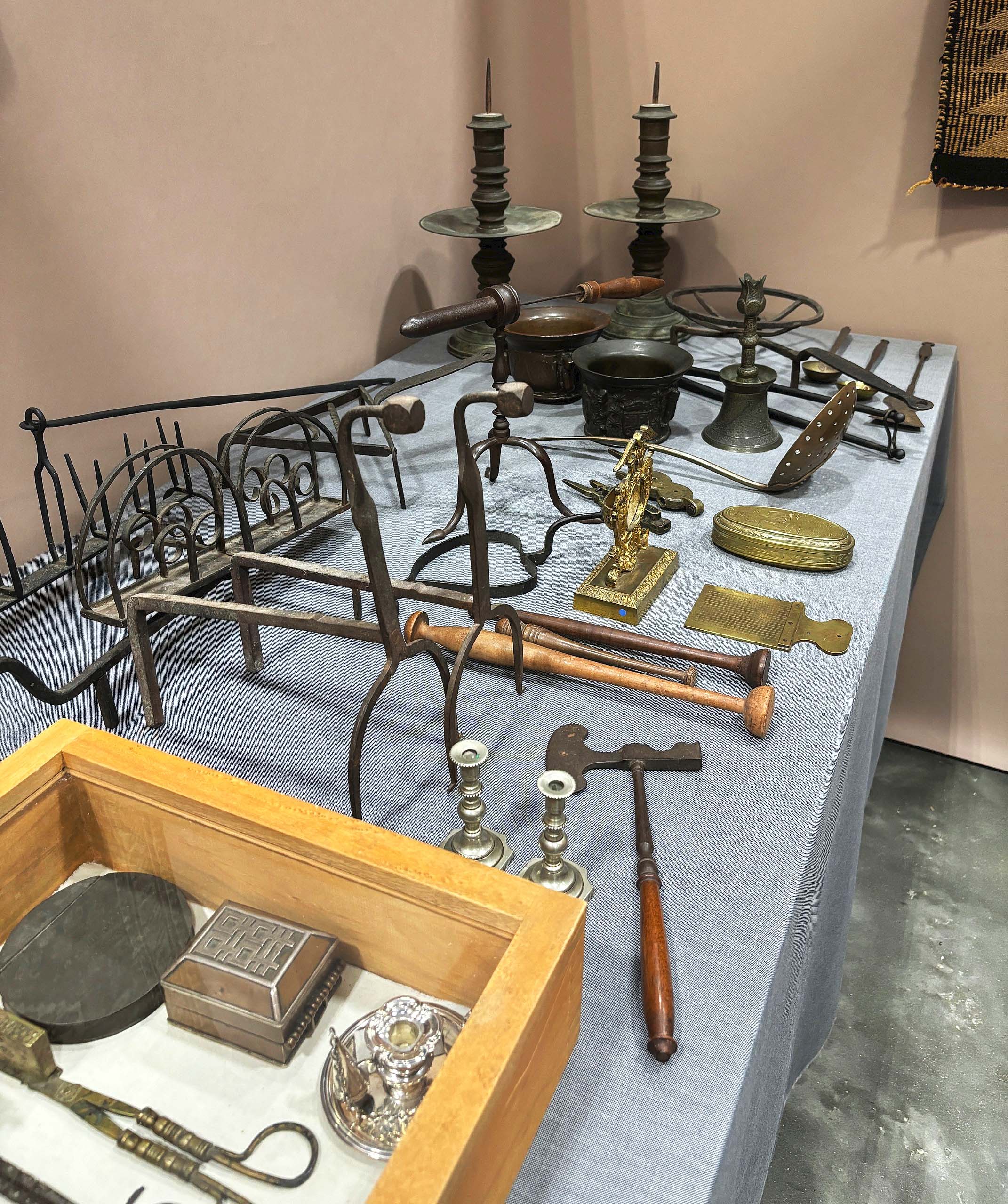
Ross Levett recently acquired a large collection of early brass candlesticks. The large pair at the far end of his table was made in Indonesia for the Dutch market, in the Seventeenth Century. Thomaston, Maine.
Morgan MacWhinnie, Salisbury, Mass., had a booth full of early furniture. He had a circa 1790 mahogany Boston dropfront desk with a triple shell interior, a circa 1720 curly maple highboy with drawers lined with Boston newspapers and several Windsor chairs. MacWhinnie also had period accessories, including candlesticks and some small paintings
One of the new exhibitors, Sherre Mumpower, Troy, Ohio, offered bellarmine jugs, European pewter, Delft, some needlework purses and several pieces of burl. Nancy McGlamery and Ed Pelton, from Lancaster, Penn., were other dealers who had not done the show before. They had showcases filled with exceptional Christmas and Halloween items as well as Thanksgiving decorations, which included a lifelike, colorful 12-inch papier mâché German candy container.
There were a number of quilts to be had. Barret Menson, Perkins and Menson Antiques, Townsend, Mass., had a circa 1860 colorful, floral applique example; they also had several hooked rugs. Menson is well-known for his selection of early frames.
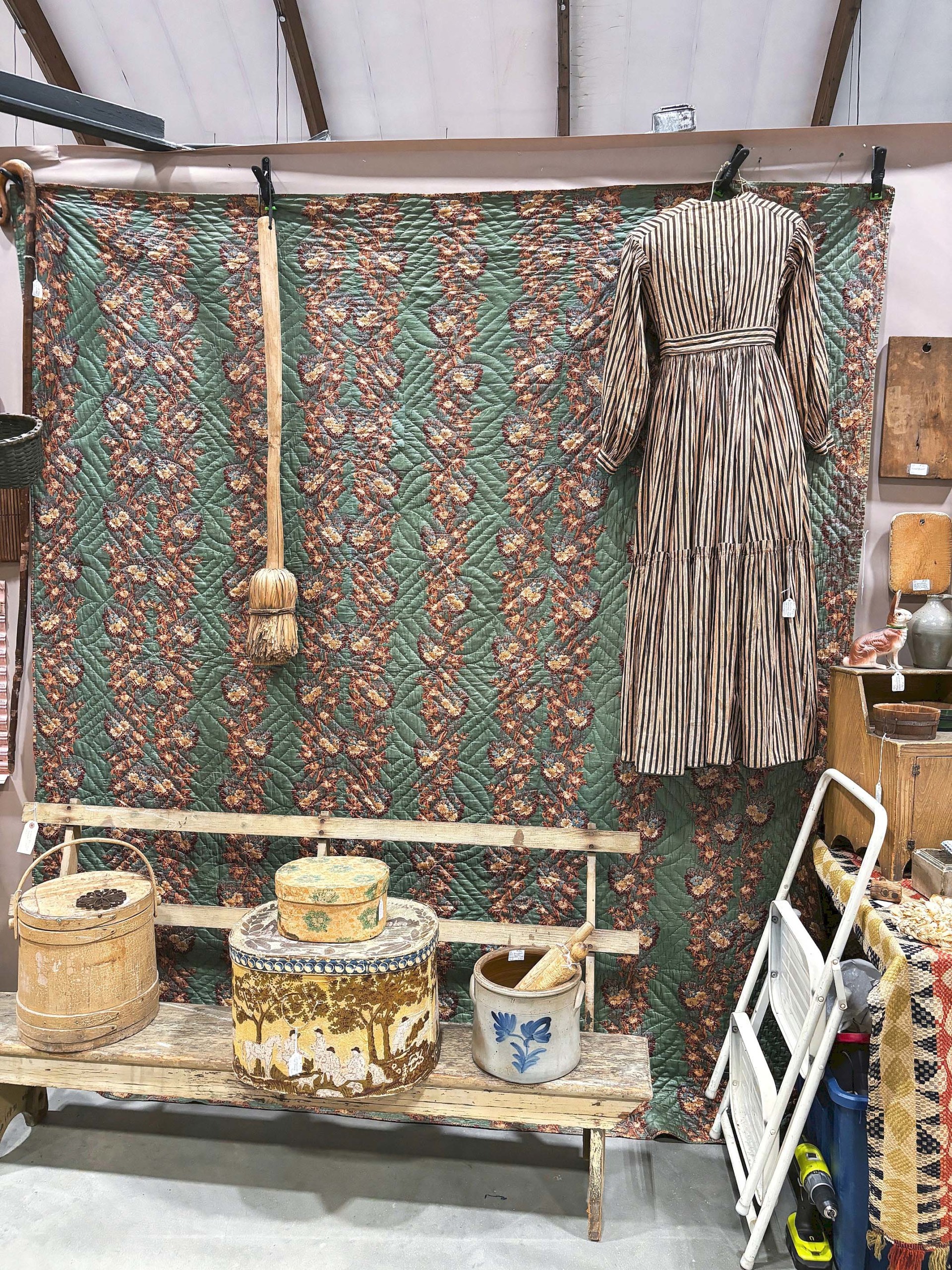
Charlie Guinipero had two chintz quilts in fine condition; one sold quickly. Pantry Box Antiques, Stafford Springs, Conn.
Charlie Guinipero, Pantry Box Antiques, Stafford Springs, Conn., had two chintz quilts in fine condition and sold one quickly. Guinipero takes a large booth, and it seems that there is not an empty square inch. It’s filled with a large selection of Steiff animals, pantry box, fireplace accessories and much more. After the show, Guinipero told Antiques and The Arts Weekly the show had been his best show ever, anywhere.
Another of the exhibitors new to the show was Dordy Fontinel, Nellysford, Va. She used one wall of her booth to hang a collection of about two dozen doll quilts. Also new to the show was John Prunier, from Warren, Mass. He had an unusual Currier and Ives print, “Home For Thanksgiving,” which had been enhanced with traces of China white paint. A selection of early Delft and some Native American items are usually among his show inventory; for the Concord show, he also had a boxed set of large German carved wooden animals, in the style of John Mountz. Another new vendor was Sandwich, Mass., dealer, Jerrilyn Mayhew. She was particularly proud of an unusual early Nineteenth Century sand timer or hourglass. While most hourglasses have just two glass holders for the sand, hers had three and an elaborate tin frame to protect it.
Rona Lyn Andrews, Worcester, Mass., outdid herself with her booth. Centered on the back wall of her booth was a pair of pastel portraits, circa 1800-20; neither the artist nor the sitters were known. She also had several wallpaper boxes: one depicted Andrew Jackson. She also had a circa 1900 pencil drawing of Shakers dancing, probably derived from an earlier Currier and Ives print. Several Doris Stauble folk art assemblages rounded out her selection.
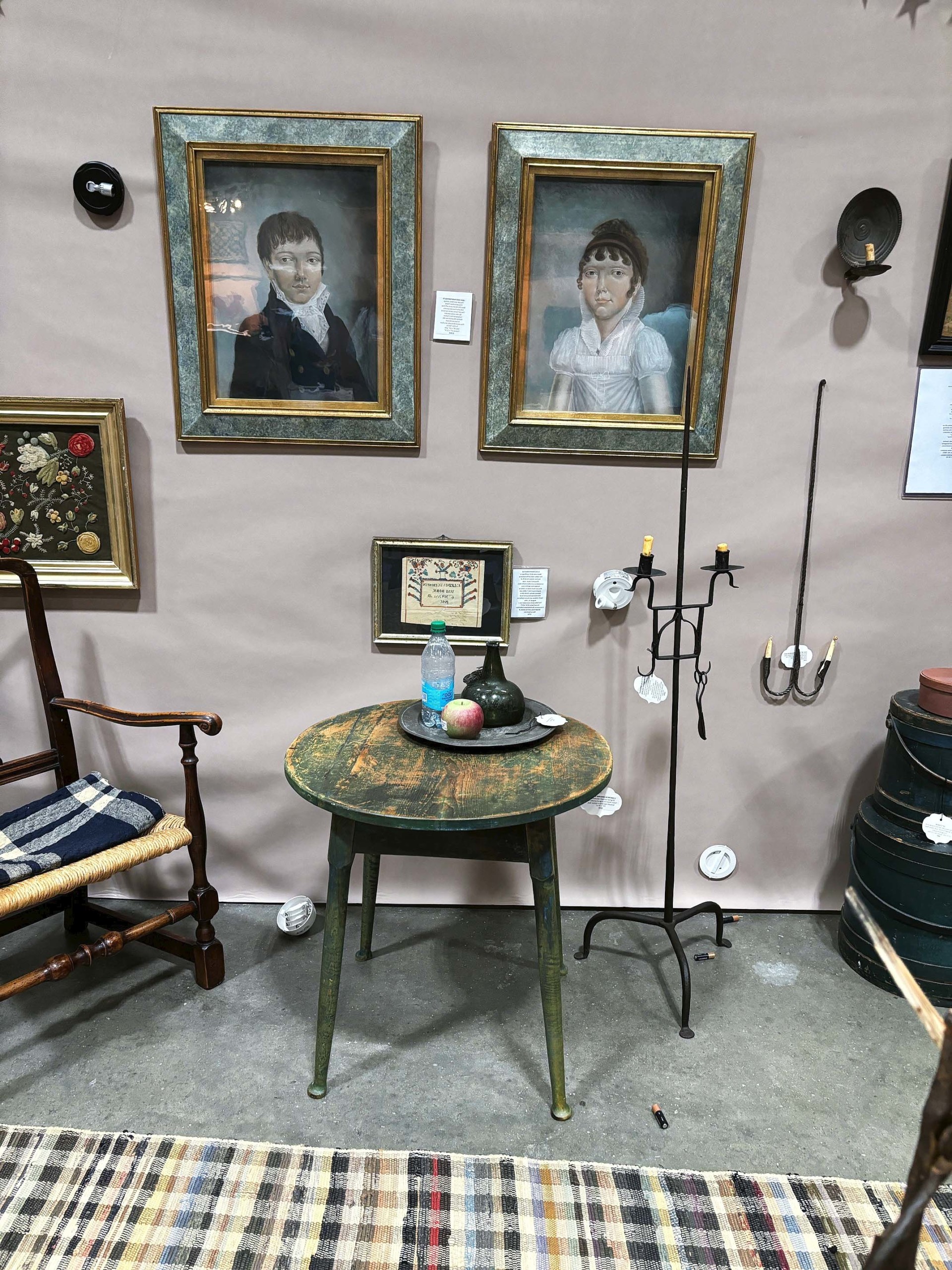
Centered on the back wall of the booth of Rona Andrews was a pair of circa 1800-20 pastel portraits. Worcester, Mass.
As you’d expect, there was plenty of folk art. An unusual weathered pelican, carved from what appeared a harbor pier, was in the booth of Horsefeathers Antiques, Delhi, N.Y. Dave & Bonnie Ferriss, of Luzerne, N.Y., had a carved box with birds as well as a polished aluminum or steel mid Twentieth Century pelican.
Robert Markowitz had a number of unusual items in his booth. A trapunto diorama of George Washington had provenance to the collection of Rex Stark and was wreathed by waxed leaves. He also had a cut-paper, wax and mica reverse painting on glass. A lenticular print of Washington and Grant, based on Currier and Ives prints of the two presidents, was available, as were lithographs of Tom Thumb and his wife, Lavinia, which are seen from time to time. Markowitz’s lithographs of other little people included one of Cissie and Victoria Foster, who were known as “The Fairy Sisters;” it was titled “The World’s Smallest People.” At the time the print was published, one sister was three years old, the other was ten.
After the show, Mavris said, “This year it all worked right. Several of the new dealers told me they’d be back next year. I was very pleased with the crowd of early buyers — we had more than 300 — so I’ve nothing to complain about. I’m looking forward to getting the Hampton shows up and running in the fall and I have some ideas on how grow that show.”
For further information, 207-608-3086 or www.petermavrisantiqueshows.com.

